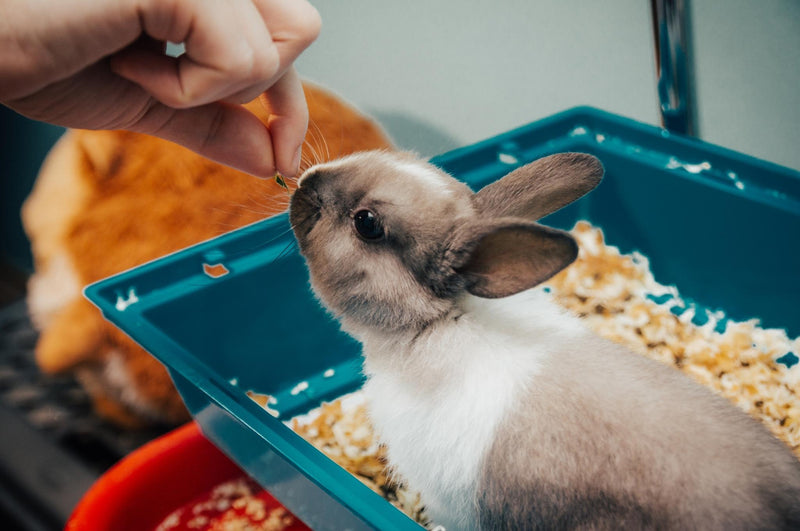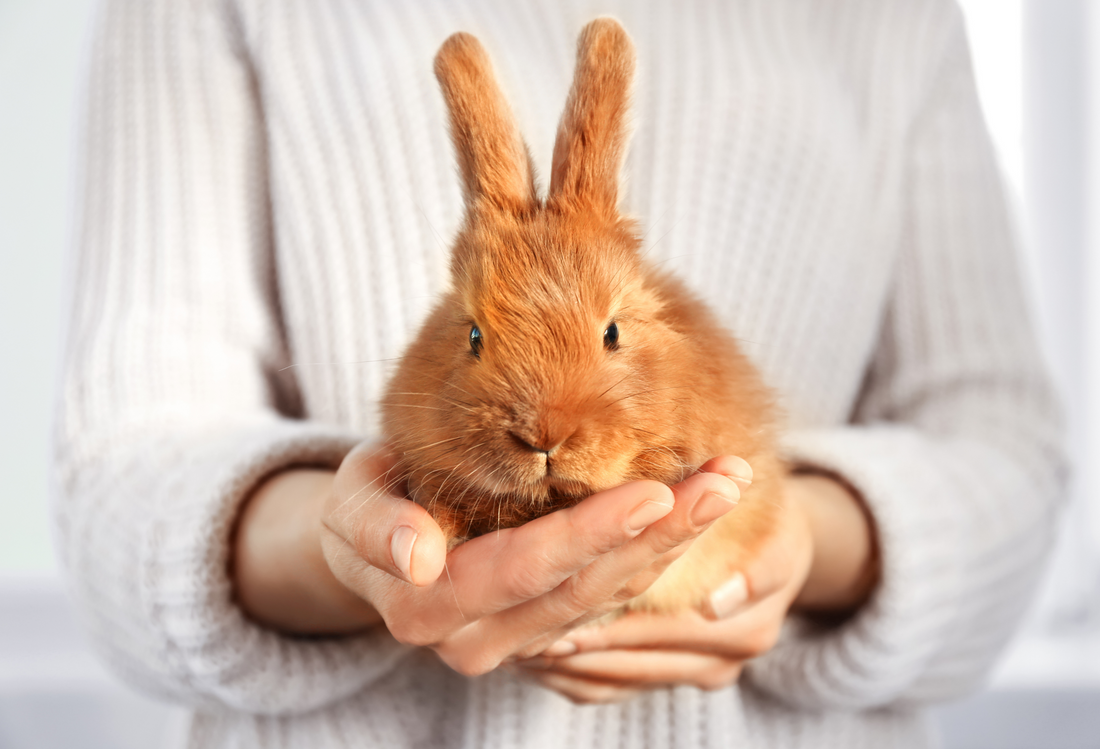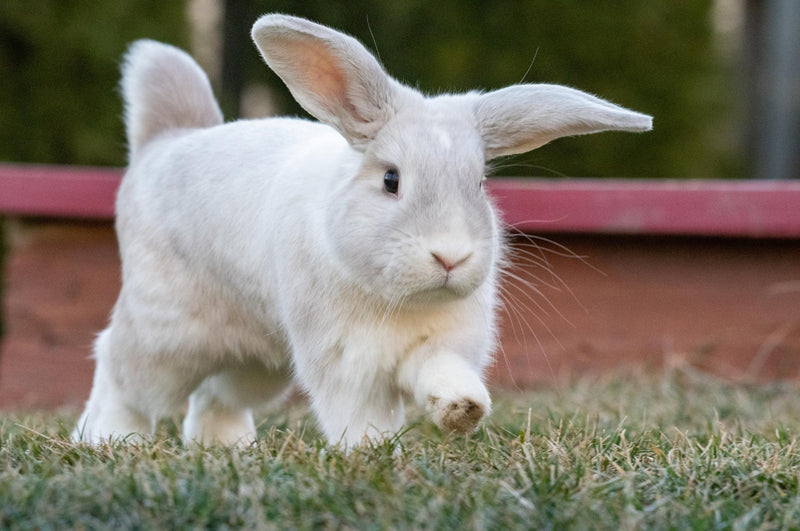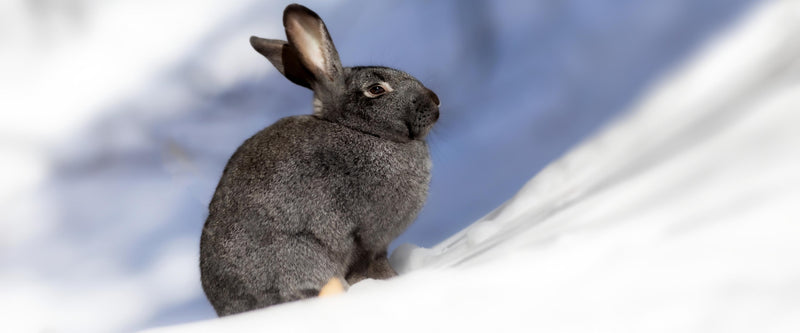
- 29 March 2022
- rabbits

Food plays a really important part in your rabbit’s health and wellbeing. You should feed your rabbits a diet that is as healthy as possible to prevent unavoidable trips to the vets and help them live long and healthy lives.
The wrong diet can lead to all sorts of health problems, including dental disease, gut stasis and obesity. We all know how rabbits thrive in the wild, and at Newhay we believe that keeping your rabbit's diet as natural as possible is the best approach. It will certainly help their bodies to function as nature intended; preventing dental problems and keeping them at a healthy weight.
The best diet for your bunny is one that is as close to a wild rabbit’s diet as possible, that involves a lot of grazing. Rabbits are natural grazers, meaning the best food for your rabbit and its digestive system is grass or hay.
In the wild, rabbits don’t eat cereals, root vegetables or fruit although they are fine in moderation as a special treat.
Overfeeding your rabbit with these treats can seriously damage your rabbit’s teeth, due to the number of natural sugars that they contain. This is why hay and grass are really important for your bunnies diet, especially premium quality Timothy Hay.

Since hay should account for 85-95% of your rabbit’s daily diet, a domestic rabbit should be eating around 1kg of premium quality hay every week.

As a rule, it is recommended that rabbits should eat at least their body size in good quality hay every day.
A tip for measuring your furry friend's daily hay intake is if you put the daily amount of hay next to your rabbit, it should be a similar size as them. As a rule, either fresh hay or growing grass should always be available, but never grass clippings.
Eating the right amount of hay and grass can be very beneficial for their digestive systems, but also in preventing dental care problems.
The amount of hay a rabbit should eat does depend on their lifestyle, size, age, and overall health. If you are unsure, you should take advice from an expert to start with, monitor your rabbit’s intake carefully, and adjust the amount of hay if it is being left or eaten very quickly.
It is also important that your rabbit always has access to freshwater as they can easily become dehydrated and seriously ill.
A rabbit’s teeth normally grow at a rate of approximately 1cm every month. As a result of their continuous grazing lifestyle, they have open rooted teeth. This means their teeth grow continuously throughout their life, growing back as fast as they are grounded down by chewing grass or hay.
Rabbit’s teeth can be kept at the correct length and shape by eating grass, hay and leafy green plants. Eating the wrong diet with too many sugary treats like fruit or rabbit muesli, can lead to serious dental disease.
As tempting as it may be, never feed your rabbits leftover lawnmower cuttings, since these can seriously damage your rabbit’s digestive systems.
 We believe in feeding rabbits as naturally as possible and since they do not need food bowls to eat from, buying one for your furry friend is not necessary.
We believe in feeding rabbits as naturally as possible and since they do not need food bowls to eat from, buying one for your furry friend is not necessary.
In the wild, rabbits spend a vast majority of their time foraging for food, so being fed from a bowl isn’t always best for your rabbit's health.
You might want to scatter their food in a clean area of their cage or a box of hay so they have to search for their treats, which mentally stimulates your bunny, helps with their instincts, and acts as a fun game to keep them busy.
If you would like to use food bowls, make sure they’re cleaned every day, and have at least two bowls in different areas of their cage with food split between them. This means if you have more than one bunny, you can make sure that your rabbits won’t stop each other from getting the tastiest treats. It will also act as a good form of exercise for your bunny because it will mean they will have to hop between the bowls to find the best treats.
Although they’re both essentially dried grass, bedding hay and feeding hay are very different. Feeding hay has more nutrients for keeping your rabbit’s digestive system healthy, it is also fresher, usually greener, and tastier than bedding hay.
Bedding hay is normally quite dry, making it ideal for keeping warm but not so great for nibbling. It won’t do them any harm if they have a nibble, as long as they have plenty of quality feeding hay available too.
Read more about the Newhay Way from how we grow and process Timothy Hay, harvesting it from the field through to packaging in just 48 hours to retain its natural tasty goodness.


